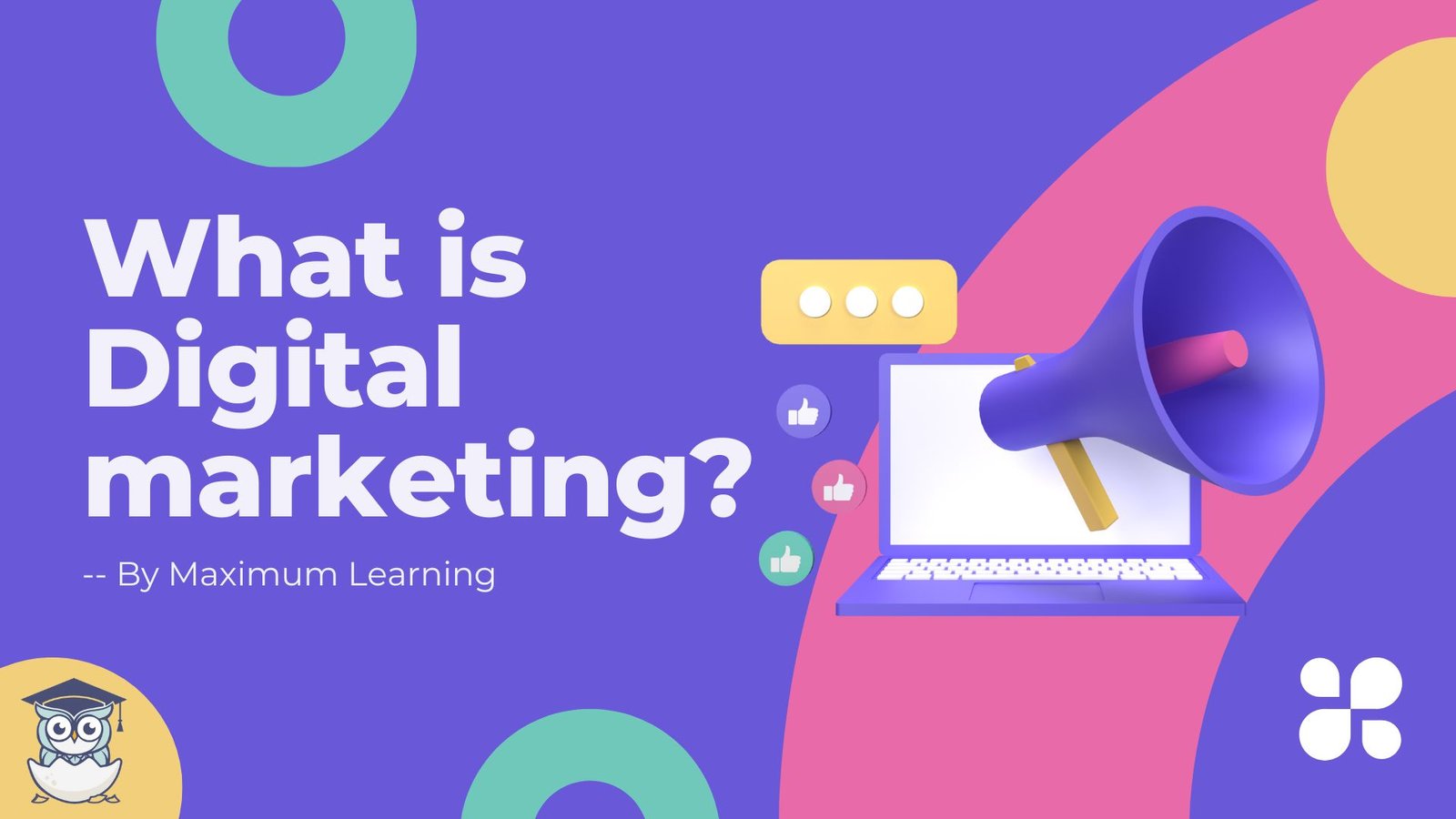- Home
- »
- Social Media Marketing Training Course
Social Media Marketing Program
- Online/In-Person
- 10 Modules
- Next batch starts in June
- Offline Program
- 10 Modules
- Next batch starts in June

Acquire genuine expertise by delving into every facet of Social Media Marketing through our comprehensive course spanning 10 interactive modules. Explore key platforms like Facebook, LinkedIn, Snapchat, YouTube, and Instagram while gaining in-depth knowledge of social strategy, research, and content creation from industry-leading experts. Elevate your skills and become proficient in navigating the dynamic world of social media marketing.
- Live sessions
- 1:1 mentorship
- 1 Month Duration
- Live sessions
- 1:1 mentorship
- 1 Month Duration
Affiliation with



45%
Average Salary Hike
5000+
Students Trained

95%
Students Success Rate
10+
Global Certifications
Unique Digital Marketing Skills You Will Learn
You will learn unique digital marketing skills that will help enhance your career with over 10+ modules with hands-on practice on the latest AI Tools and industry exposure.
Growing Followers
Content Marketing
Social Media Ads
Social Media Optimization
Strategy Building
Using Social Media Tools
Influencer Marketing
Analytics & Reporting
What will I learn?
With the skills and knowledge you will acquire with over 10+ modules, as well as the practical experience and insights gained, you will have the ability to confidently work and communicate in the fast-paced digital marketing industry. In essence, you will become proficient in social media marketing, and able to create and implement effective digital marketing plans from the ground up.
→ In this module, you will learn the fundamental principles of digital marketing and how to effectively reach and connect with customers through traditional and digital media.
→ We will cover topics such as digital research, developing marketing objectives, conducting cultural research, and understanding the differences between inbound and outbound marketing.
→ The focus is on providing clear and actionable information to help you succeed in your marketing efforts.
Strategy development in social media marketing involves creating a roadmap that outlines how your brand will use social media to achieve its marketing goals. Here's a breakdown of the key elements involved:
Goal Setting: Clearly define what you aim to achieve through your social media efforts. Goals could include increasing brand awareness, driving website traffic, generating leads, boosting sales, improving customer engagement, or enhancing brand loyalty.
Target Audience Identification: Understand who your target audience is on social media. This includes demographics (age, gender, location, income level, etc.), interests, behaviors, pain points, and preferences. Developing detailed buyer personas can help in this process.
Platform Selection: Determine which social media platforms are most relevant to your target audience and align with your marketing goals. Consider factors such as user demographics, platform features, content formats, and industry trends. Popular platforms include Facebook, Instagram, Twitter, LinkedIn, Pinterest, TikTok, Snapchat, and YouTube.
Messaging and Tone: Define your brand's voice, messaging, and tone for communicating on social media. This should reflect your brand identity, values, and personality while resonating with your target audience. Consistency in messaging across platforms is crucial for brand cohesion.
Content Strategy: Plan the types of content you will create and share on social media to engage your audience and achieve your objectives. This may include a mix of text posts, images, videos, infographics, polls, stories, user-generated content, and more. Consider the 80-20 rule, where 80% of your content provides value or entertains your audience, and 20% promotes your products or services.
Content Calendar: Develop a content calendar outlining when and what type of content will be posted on each social media platform. This ensures a consistent posting schedule and helps in maintaining an organized approach to content creation.
Engagement Strategy: Determine how you will engage with your audience on social media, including responding to comments, messages, and mentions. Encourage two-way communication by asking questions, running polls, hosting Q&A sessions, and soliciting user-generated content.
Paid Advertising Strategy: If utilizing paid advertising on social media platforms, outline your strategy for targeting, budget allocation, ad formats, creative elements, and performance tracking. Ensure alignment with your overall marketing goals and audience targeting criteria.
Performance Measurement: Establish key performance indicators (KPIs) to measure the effectiveness of your social media efforts. Track metrics such as reach, engagement, impressions, clicks, conversions, follower growth, and sentiment analysis. Regularly analyze data to assess performance, identify trends, and make data-driven optimizations.
Risk Management: Anticipate potential risks and challenges that may arise in your social media activities, such as negative feedback, crises, or security breaches. Develop contingency plans and protocols for addressing these situations swiftly and effectively.
By developing a comprehensive social media strategy, you can maximize the impact of your efforts, build a strong online presence, and achieve your marketing objectives effectively.
Content creation and curation are essential components of social media marketing that involve developing and sourcing engaging and relevant content to share with your audience. Here's a breakdown of each aspect:
Content Creation:
Original Content: This involves producing unique content specifically tailored to your brand, products, or services. Original content can include blog posts, articles, videos, infographics, podcasts, images, and more. The key is to create content that provides value to your audience, whether it educates, entertains, inspires, or solves a problem.
Branded Content: Branded content is content that incorporates your brand identity, messaging, and values. It helps reinforce brand awareness, build brand authority, and establish a connection with your audience. Branded content can take various forms, such as behind-the-scenes glimpses, employee spotlights, customer testimonials, product demonstrations, and user-generated content campaigns.
Visual Content: Visual content, such as images, videos, and infographics, tends to perform exceptionally well on social media platforms due to its high engagement potential. When creating visual content, focus on creating eye-catching visuals that are relevant to your brand and resonate with your audience's interests and preferences.
Content Calendar: Planning is crucial for content creation. Develop a content calendar outlining the types of content you'll create, the topics you'll cover, and when you'll publish them. This ensures a consistent posting schedule and allows for strategic alignment with key events, holidays, or campaigns.
Content Curation:
Curated Content Selection: Content curation involves finding and sharing third-party content from reputable sources that is relevant and valuable to your audience. This can include industry news, articles, blog posts, videos, and other resources that align with your brand's interests and the interests of your followers. Curated content helps position your brand as a knowledgeable authority within your industry and provides additional value to your audience beyond your own content.
Engagement and Interaction: Curating content also involves engaging with the content you share by adding your perspective, commentary, or insights. This helps spark conversations, foster engagement, and demonstrate your expertise in the subject matter.
Ethical Considerations: When curating content, it's essential to respect copyright laws and give proper attribution to the original creators. Always provide credit to the source of the content you share and adhere to fair use guidelines when applicable.
Balance Between Creation and Curation: Finding the right balance between creating original content and curating third-party content is key to maintaining a diverse and engaging social media presence. While original content showcases your brand's unique voice and perspective, curated content adds variety and depth to your content mix while establishing your brand as a valuable resource within your industry.
Overall, content creation and curation are integral parts of an effective social media marketing strategy, enabling brands to build relationships with their audience, drive engagement, and ultimately achieve their marketing objectives.
Community management in social media refers to the practice of building and nurturing relationships with your audience on various social media platforms. It involves actively engaging with followers, responding to comments and messages, fostering discussions, and creating a sense of belonging and community around your brand. Here's a deeper dive into what community management entails:
Engagement and Interaction: One of the primary goals of community management is to engage with your audience authentically. This includes responding promptly to comments, mentions, and messages, whether they are inquiries, feedback, or expressions of interest. Engaging with your audience shows that you value their input and are committed to building a relationship with them.
Providing Support and Assistance: Social media platforms often serve as channels for customer support. Community managers address customer inquiries, troubleshoot issues, and provide assistance to ensure a positive customer experience. Prompt and helpful responses can turn a potentially negative interaction into a positive one and build customer loyalty.
Fostering Relationships: Community managers play a crucial role in fostering relationships between the brand and its audience members. By actively participating in conversations, sharing user-generated content, and acknowledging and celebrating milestones or achievements within the community, they create a sense of camaraderie and belonging among followers.
Moderation and Conflict Resolution: In online communities, conflicts or negative interactions may arise. Community managers monitor conversations and intervene when necessary to de-escalate conflicts, enforce community guidelines, and maintain a respectful and inclusive environment. Handling negative feedback or criticism gracefully and constructively can help preserve the brand's reputation and credibility.
Content Curation and Sharing: Community managers curate and share relevant content that resonates with the interests and preferences of the community members. This could include sharing industry news, useful resources, or user-generated content that adds value to the community and encourages engagement.
Building Advocacy and Brand Ambassadors: Engaged community members can become advocates and brand ambassadors, spreading positive word-of-mouth and endorsing the brand to their networks. Community managers identify and nurture these relationships, empowering advocates to share their experiences and amplify the brand's message.
Analyzing Community Insights: Community managers analyze community insights and feedback to gain a deeper understanding of audience sentiment, preferences, and trends. This information informs future content strategy, product development, and marketing initiatives, helping the brand better serve its audience's needs and interests.
Effective community management requires a blend of interpersonal skills, customer service acumen, strategic thinking, and a genuine passion for building connections with people. By investing in community management efforts, brands can cultivate a loyal and engaged audience that contributes to the brand's success and growth.
Social media advertising involves using paid promotional tactics on social media platforms to reach a targeted audience, increase brand visibility, drive website traffic, and achieve specific marketing objectives. Here's an overview of how social media advertising works and some key aspects to consider:
Ad Formats: Social media platforms offer various ad formats to suit different marketing goals and audience preferences. These may include:
- Image Ads: Static images with accompanying text.
- Video Ads: Short videos designed to capture attention and convey your message.
- Carousel Ads: Swipeable slideshows featuring multiple images or videos.
- Stories Ads: Full-screen vertical ads that appear within the Stories section of platforms like Instagram, Facebook, and Snapchat.
- Sponsored Posts: Promoted content that appears within users' feeds, mimicking organic posts.
- Lead Generation Ads: Forms embedded within ads to capture user information directly.
- Dynamic Ads: Automatically generated ads tailored to individual users based on their behavior and preferences.
Targeting Options: Social media platforms provide advanced targeting capabilities to ensure your ads are shown to the most relevant audience. Targeting options may include demographics (age, gender, location, etc.), interests, behaviors, job titles, education level, purchase history, and more. Some platforms also allow you to create custom audiences based on your existing customer data or website visitors.
Ad Placement: You can choose where your ads will be displayed across the social media platform. Options typically include feeds (appearing within users' timelines), stories (appearing within the Stories section), in-stream (appearing within video content), search results, and sidebar placements.
Budgeting and Bidding: Social media advertising allows you to set budgets and bidding strategies to control your ad spend and optimize performance. You can choose between different bidding models such as cost-per-click (CPC), cost-per-thousand impressions (CPM), cost-per-acquisition (CPA), or cost-per-engagement (CPE), depending on your campaign goals.
Ad Creative: Compelling ad creative is essential for grabbing users' attention and driving engagement. Ensure your ads feature eye-catching visuals, concise and persuasive copy, a clear call-to-action (CTA), and relevant messaging aligned with your brand and campaign objectives.
Measurement and Optimization: Social media advertising platforms provide robust analytics tools to track the performance of your ads in real-time. Key metrics to monitor include impressions, clicks, click-through rate (CTR), conversion rate, cost-per-click (CPC), return on ad spend (ROAS), and more. Use this data to optimize your campaigns, refine targeting, adjust ad creative, and maximize ROI.
Compliance and Policies: Adherence to platform policies and guidelines is crucial to ensure your ads are approved and compliant with regulations. Familiarize yourself with each platform's advertising policies regarding prohibited content, targeting restrictions, image guidelines, and disclosure requirements.
By leveraging social media advertising effectively, businesses can reach their target audience with precision, drive meaningful engagement, and achieve their marketing objectives in a measurable and cost-effective manner.
Analytics and reporting in social media marketing involve the collection, analysis, and interpretation of data related to the performance of social media campaigns and activities. This process provides valuable insights into the effectiveness of marketing efforts, helps track progress towards goals, and informs strategic decision-making. Here's an overview of analytics and reporting in social media marketing:
Data Collection: Social media platforms offer built-in analytics tools that provide data on various metrics such as reach, engagement, impressions, clicks, conversions, follower growth, demographics, and more. Additionally, third-party analytics tools may be used to gather more comprehensive data or to consolidate data from multiple platforms into one dashboard.
Key Performance Indicators (KPIs): KPIs are specific metrics used to measure the success of social media marketing efforts. These may vary depending on campaign objectives but commonly include metrics like:
- Reach: The number of unique users who see your content.
- Engagement: Actions taken on your content, such as likes, comments, shares, and clicks.
- Impressions: The total number of times your content is displayed, including multiple views by the same user.
- Click-Through Rate (CTR): The percentage of users who click on a link or call-to-action in your content.
- Conversion Rate: The percentage of users who complete a desired action, such as making a purchase or filling out a form.
- Follower Growth: The rate at which your social media audience is expanding over time.
Performance Analysis: Analyzing social media data involves identifying trends, patterns, and correlations within the data to understand what is working well and what areas need improvement. This may include comparing performance across different platforms, evaluating the effectiveness of different types of content, identifying peak engagement times, and assessing the impact of specific campaigns or initiatives.
Reporting: Once data analysis is complete, the findings are typically compiled into reports that provide insights and recommendations for optimizing social media marketing efforts. Reports may be generated on a regular basis (e.g., weekly, monthly, quarterly) and shared with key stakeholders within the organization.
Optimization Strategies: Based on the insights gained from analytics and reporting, optimization strategies can be implemented to improve future social media campaigns. This may involve adjusting content strategies, refining targeting criteria, reallocating ad budgets, experimenting with new formats or platforms, or optimizing posting times for maximum engagement.
Continuous Monitoring: Social media analytics is an ongoing process that requires continuous monitoring and adjustment. By regularly tracking performance metrics and staying informed about changes in audience behavior, platform algorithms, and industry trends, marketers can adapt their strategies to remain competitive and achieve their goals.
Overall, analytics and reporting play a crucial role in social media marketing by providing actionable insights that drive informed decision-making, optimize campaign performance, and ultimately contribute to the success of the overall marketing strategy.89
Influencer marketing is a type of marketing strategy that involves collaborating with influential individuals or content creators on social media to promote a brand, product, or service to their audience. These individuals, known as influencers, have a dedicated and engaged following within a specific niche or industry, and their recommendations and endorsements can significantly impact consumer behavior. Here's a breakdown of influencer marketing:
Identifying Influencers: The first step in influencer marketing is identifying relevant influencers who align with your brand values, target audience, and marketing goals. Influencers come in various sizes, from macro-influencers with large followings to micro-influencers with smaller but highly engaged audiences. The choice of influencers depends on factors such as reach, engagement rate, authenticity, and relevance to your brand.
Building Relationships: Once potential influencers are identified, the next step is to establish and nurture relationships with them. This involves reaching out to influencers with personalized pitches, expressing genuine interest in their content, and proposing collaboration opportunities that benefit both parties. Building strong relationships with influencers is essential for fostering trust and authenticity in influencer partnerships.
Campaign Planning: Collaborating with influencers typically involves creating a campaign strategy that outlines campaign objectives, messaging, content guidelines, deliverables, timelines, and performance metrics. The campaign should align with the influencer's audience and content style while effectively conveying the brand's message and value proposition.
Content Creation: Influencers are responsible for creating content that promotes the brand or product in a creative and authentic way. This content may take various forms, including sponsored posts, product reviews, tutorials, unboxing videos, sponsored stories, or live streams. The goal is to produce content that resonates with the influencer's audience while showcasing the brand in a positive light.
Content Amplification: Influencer-created content is shared with their followers across social media platforms, reaching a targeted and engaged audience. Brands may also amplify influencer content through their own social media channels, website, email newsletters, and other marketing channels to extend its reach and impact.
Measurement and Evaluation: Tracking the performance of influencer campaigns is crucial for assessing their effectiveness and return on investment (ROI). Key metrics to measure may include reach, engagement, impressions, clicks, conversions, brand sentiment, and follower growth. Analyzing these metrics helps identify successful strategies, optimize future campaigns, and demonstrate the value of influencer marketing efforts to stakeholders.
Compliance and Transparency: It's important for brands and influencers to adhere to relevant regulations and guidelines governing influencer marketing, such as disclosure requirements for sponsored content. Transparency builds trust with the audience and ensures that influencer partnerships are conducted ethically and legally.
Influencer marketing can be a highly effective strategy for reaching and engaging target audiences, building brand awareness, and driving conversions. By partnering with influencers who authentically resonate with their audience, brands can leverage the power of social proof and peer recommendations to amplify their marketing efforts and achieve their business objectives.
Social listening and monitoring refer to the process of actively monitoring social media platforms to track mentions, conversations, and trends related to a brand, product, industry, or specific keywords. It involves analyzing social media content, such as posts, comments, reviews, and hashtags, to gain insights into audience sentiment, identify opportunities, and address potential issues. Here's a closer look at social listening and monitoring:
Tracking Mentions: Social listening involves monitoring social media platforms for mentions of your brand name, products, competitors, industry keywords, or relevant hashtags. This allows you to stay informed about what people are saying about your brand and industry in real-time.
Understanding Audience Sentiment: By analyzing the tone and sentiment of social media conversations, you can gauge how people feel about your brand, products, or industry. Positive sentiment indicates satisfaction or appreciation, while negative sentiment may indicate dissatisfaction or issues that need to be addressed. Neutral sentiment provides insights into general discussions or informational content.
Identifying Trends and Insights: Social listening helps identify emerging trends, topics of interest, and discussions relevant to your brand or industry. By monitoring conversations, you can uncover consumer preferences, pain points, needs, and behaviors, which can inform product development, content strategy, marketing campaigns, and customer service initiatives.
Engagement and Interaction: Social listening provides opportunities for engagement and interaction with your audience. When you identify relevant conversations or mentions, you can respond promptly, provide assistance, answer questions, address concerns, or express gratitude for positive feedback. Engaging with your audience demonstrates responsiveness, authenticity, and a commitment to customer satisfaction.
Competitive Analysis: Social listening allows you to monitor your competitors' social media activities and track their mentions, campaigns, and audience engagement. By analyzing competitor strategies and audience responses, you can identify strengths, weaknesses, opportunities, and threats within your competitive landscape and adjust your own strategies accordingly.
Brand Reputation Management: Monitoring social media conversations enables proactive brand reputation management. By addressing customer feedback, resolving issues, and responding to crises in a timely and transparent manner, you can mitigate negative sentiment, protect your brand reputation, and maintain trust and loyalty among your audience.
Data-driven Insights and Decision-making: Social listening provides valuable data and insights that can inform strategic decision-making across various departments within an organization, including marketing, customer service, product development, and sales. By leveraging data-driven insights, you can optimize marketing campaigns, improve products and services, enhance customer experiences, and drive business growth.
Overall, social listening and monitoring are essential practices for any organization looking to understand and engage with their audience effectively, stay ahead of trends, and maintain a positive brand reputation in today's social media landscape.
Social media tools and platforms are essential components of any social media marketing strategy, enabling businesses to manage, analyze, and optimize their presence on various social media channels. These tools provide a wide range of functionalities to streamline processes, enhance engagement, and measure performance effectively. Here's an overview:
Management Tools: Social media management tools help businesses streamline their social media activities by providing features such as:
- Scheduling: Allows users to plan and schedule posts in advance, ensuring consistent and timely content delivery.
- Publishing: Facilitates the creation and publishing of content across multiple social media platforms from a single dashboard.
- Content Calendar: Provides an organized view of scheduled posts, campaigns, and events, helping maintain a cohesive content strategy.
- Collaboration: Enables team members to collaborate on content creation, review, and approval processes.
- Social Listening: Monitors social media platforms for mentions, conversations, and trends related to the brand, competitors, or industry.
Analytics Tools: Social media analytics tools provide insights into the performance of social media campaigns and activities. Key features include:
- Performance Metrics: Tracks metrics such as reach, engagement, impressions, clicks, conversions, and follower growth.
- Reporting: Generates customizable reports that visualize data trends, highlight key performance indicators (KPIs), and measure ROI.
- Audience Insights: Provides demographic information, interests, behaviors, and preferences of the brand's social media audience.
- Competitor Analysis: Allows businesses to benchmark their performance against competitors and identify opportunities for improvement.
Listening and Monitoring Tools: Social media listening and monitoring tools track conversations, mentions, and sentiment surrounding the brand, products, or industry. These tools offer:
- Keyword Monitoring: Monitors specific keywords, hashtags, or brand mentions across social media platforms in real-time.
- Sentiment Analysis: Analyzes the tone and sentiment of social media conversations to gauge audience sentiment towards the brand.
- Trend Identification: Identifies emerging trends, topics, and discussions relevant to the brand or industry.
- Competitive Analysis: Tracks competitors' social media activities and performance metrics to gain insights into their strategies.
Advertising Platforms: Social media advertising platforms allow businesses to create and manage paid advertising campaigns on social media channels. Key features include:
- Ad Creation: Provides tools for creating, customizing, and optimizing ad content, including text, images, videos, and targeting options.
- Audience Targeting: Offers advanced targeting capabilities to reach specific demographics, interests, behaviors, and custom audience segments.
- Budget Management: Allows users to set budgets, bidding strategies, and scheduling options to control ad spend and optimize campaign performance.
- Performance Tracking: Tracks key metrics such as ad impressions, clicks, conversions, and return on ad spend (ROAS) to measure campaign effectiveness.
Listening Platforms: Dedicated social media listening platforms offer advanced capabilities for monitoring, analyzing, and responding to social media conversations. These platforms typically include features such as:
- Real-time Monitoring: Monitors social media platforms, news sites, blogs, and forums for mentions and conversations related to the brand or industry.
- Sentiment Analysis: Analyzes the sentiment of social media mentions to understand audience perceptions and emotions.
- Influencer Identification: Identifies influential individuals and brand advocates within the social media landscape for potential collaboration opportunities.
- Crisis Management: Provides tools for detecting and responding to crises or reputation management issues in real-time.
Overall, social media tools and platforms play a crucial role in helping businesses effectively manage their social media presence, analyze performance, engage with their audience, and achieve their marketing objectives in today's digital landscape. Choosing the right tools and platforms that align with your business goals and requirements is essential for maximizing the impact of your social media marketing efforts.
Paid social media tools are software platforms or services designed to help businesses manage and optimize their paid advertising campaigns on social media platforms. These tools offer a range of features and functionalities to streamline campaign creation, targeting, optimization, and performance tracking. Here's an overview of paid social media tools and their key capabilities:
Ad Creation and Management: Paid social media tools provide intuitive interfaces for creating and managing paid advertising campaigns across various social media platforms. These platforms typically offer features such as:
- Ad Builders: Drag-and-drop editors or templates for creating ad creatives, including images, videos, text, and calls-to-action.
- Ad Copywriting Assistance: Tools to generate compelling ad copy and headlines optimized for engagement and conversions.
- Ad Preview: Previews of how ads will appear on different devices and platforms to ensure they look visually appealing and are optimized for each format.
Audience Targeting and Segmentation: Paid social media tools offer advanced targeting capabilities to reach specific audiences based on demographics, interests, behaviors, and other criteria. Key features include:
- Audience Segmentation: Tools to create custom audience segments based on customer data, website visitors, email lists, and lookalike audiences.
- Interest and Behavior Targeting: Targeting options to reach users based on their interests, online behaviors, purchasing intent, and engagement with similar content or brands.
- Retargeting and Remarketing: Features to retarget users who have previously interacted with your brand or visited your website, increasing the likelihood of conversions.
Budget Management and Optimization: Paid social media tools help businesses manage their advertising budgets effectively and optimize campaign performance to maximize return on investment (ROI). Features include:
- Budget Allocation: Tools to set and adjust advertising budgets across campaigns, ad sets, and platforms based on performance goals and objectives.
- Bid Optimization: Automated bidding algorithms that adjust bid amounts in real-time to maximize ad visibility and achieve campaign objectives while staying within budget constraints.
- Ad Scheduling: Options to schedule ad delivery during peak engagement times or specific hours of the day to optimize performance and minimize wasted ad spend.
Performance Tracking and Analytics: Paid social media tools provide comprehensive analytics and reporting capabilities to track the performance of advertising campaigns and measure key metrics. These features include:
- Performance Metrics: Dashboards that display metrics such as impressions, clicks, click-through rates (CTR), conversions, cost-per-acquisition (CPA), return on ad spend (ROAS), and more.
- Custom Reporting: Tools to generate customizable reports that visualize campaign performance trends, highlight KPIs, and track progress towards marketing objectives.
- Multi-Channel Attribution: Attribution models that attribute conversions and sales to specific advertising channels, campaigns, or touchpoints to determine the most effective allocation of advertising resources.
Ad Creative Testing and Optimization: Paid social media tools offer features for testing and optimizing ad creatives, messaging, and targeting strategies to improve campaign performance. These features include:
- A/B Testing: Tools to create multiple ad variations and test different elements such as headlines, images, ad copy, and calls-to-action to identify the most effective combinations.
- Creative Insights: Analytics and feedback on ad creative performance, including engagement metrics, audience response, and sentiment analysis, to inform creative optimization efforts.
- Dynamic Creative Optimization (DCO): Features that automatically generate and optimize ad creatives based on user data, preferences, and behaviors to deliver personalized and relevant content to each audience segment.
Overall, paid social media tools play a crucial role in helping businesses effectively manage their paid advertising efforts on social media platforms, optimize campaign performance, and achieve their marketing objectives. By leveraging these tools, businesses can reach their target audiences more effectively, drive engagement and conversions, and maximize the ROI of their advertising spend.
Customer support in the context of social media refers to the provision of assistance, information, and resolution of issues to customers through social media channels. With the widespread use of social media platforms, customers often turn to these channels to seek help, ask questions, or voice concerns about products or services. Here's how customer support works on social media:
Monitoring Channels: Businesses need to actively monitor their social media channels, including platforms like Facebook, Twitter, Instagram, LinkedIn, and others, for customer inquiries, comments, mentions, and messages. This involves regularly checking notifications, mentions, and direct messages to ensure prompt responses to customer queries and concerns.
Timely Responses: Timeliness is crucial in social media customer support. Customers expect quick responses, often within hours or even minutes. Businesses should aim to acknowledge customer inquiries promptly and provide initial responses indicating that their concerns are being addressed. Even if the issue cannot be resolved immediately, acknowledging the customer's message demonstrates responsiveness and care.
Personalized Engagement: Social media allows businesses to engage with customers on a more personal level. Customer support interactions should be personalized and empathetic, addressing customers by name and demonstrating genuine concern for their needs and concerns. Personalization helps build rapport and fosters positive customer experiences.
Problem Resolution: Customer support teams on social media should be equipped to address a wide range of issues, including product inquiries, technical problems, billing issues, and complaints. This may involve providing troubleshooting guidance, escalating complex issues to specialized teams, facilitating returns or exchanges, or issuing refunds or compensation as appropriate.
Transparency and Authenticity: Transparency is key in social media customer support. Businesses should communicate openly and honestly with customers, providing clear and accurate information about products, services, policies, and resolutions to issues. Authenticity and sincerity in interactions help build trust and credibility with customers.
Escalation Procedures: Some customer issues may require escalation to higher levels of support or management for resolution. Businesses should have clear escalation procedures in place to ensure that unresolved issues are addressed promptly and effectively. This may involve transferring the conversation to a more senior support agent, a specialized team, or management for further assistance.
Feedback Collection: Social media customer support interactions provide valuable opportunities for collecting feedback and insights from customers. Businesses should actively solicit feedback from customers about their experiences, preferences, and suggestions for improvement. This feedback can inform product development, service enhancements, and overall customer experience initiatives.
Follow-Up and Resolution Confirmation: After resolving a customer issue, it's important to follow up with the customer to ensure that they are satisfied with the resolution and to confirm that the issue has been fully resolved. Following up demonstrates commitment to customer satisfaction and provides an opportunity to address any lingering concerns or questions.
Overall, effective customer support on social media requires proactive monitoring, timely responses, personalized engagement, problem-solving skills, transparency, and a commitment to delivering exceptional customer experiences. By prioritizing customer support on social media channels, businesses can enhance their brand reputation, build customer loyalty, and drive positive word-of-mouth referrals.
Crisis management is the process of effectively handling and mitigating adverse events or situations that threaten the reputation, operations, or well-being of an organization. In the context of social media, crisis management involves responding to and managing crises that unfold or escalate on social media platforms. Here's an overview of how crisis management works on social media:
Identification and Monitoring: The first step in crisis management is identifying potential crises as early as possible. This involves actively monitoring social media channels, news outlets, and online forums for mentions, discussions, or signs of emerging issues related to the organization, its products, services, or industry. Social media listening tools can be valuable for tracking conversations and detecting potential crises in real-time.
Assessment and Response Planning: Once a potential crisis is identified, it's essential to assess the situation, gather relevant information, and formulate a response plan. This may involve assembling a crisis management team, designating roles and responsibilities, and establishing communication protocols for responding to the crisis on social media. The response plan should outline key messages, talking points, and strategies for addressing the crisis effectively while minimizing negative impact.
Transparency and Communication: Transparency is crucial in crisis management on social media. Organizations should communicate openly and honestly with stakeholders, including customers, employees, media, and the public, about the situation and the steps being taken to address it. Social media platforms should be used to disseminate official statements, updates, and relevant information in a timely manner. Prompt and transparent communication helps build trust, mitigate rumors, and demonstrate accountability during a crisis.
Engagement and Monitoring: During a crisis, social media channels become critical communication channels for engaging with stakeholders, addressing concerns, and providing updates. Organizations should actively monitor social media platforms for feedback, questions, and comments from the public, and respond promptly and empathetically to inquiries or complaints. Engaging with stakeholders on social media helps manage perceptions, alleviate concerns, and maintain control of the narrative during a crisis.
Resolution and Recovery: Crisis management efforts on social media should focus on resolving the crisis as quickly and effectively as possible while minimizing reputational damage. This may involve implementing corrective actions, offering apologies or compensation, and providing updates on the resolution progress. Once the crisis has been resolved, organizations should conduct post-crisis evaluations to assess the effectiveness of their response efforts and identify lessons learned for future crisis preparedness.
Learning and Adaptation: Crisis management on social media is an iterative process that requires continuous learning and adaptation. Organizations should analyze the crisis response, gather feedback from stakeholders, and identify areas for improvement in their crisis management strategies, communication protocols, and social media policies. By learning from past crises and incorporating lessons learned into future crisis preparedness efforts, organizations can enhance their resilience and responsiveness in managing future crises effectively.
In summary, crisis management on social media involves proactive identification, transparent communication, stakeholder engagement, resolution efforts, and continuous learning and adaptation to effectively navigate and mitigate the impact of crises on the organization's reputation and operations.
Social media policy and compliance refer to the guidelines, rules, and regulations that govern the use of social media by individuals or organizations. These policies are put in place to ensure responsible and ethical behavior, protect the interests of the organization, maintain brand reputation, and mitigate potential risks associated with social media use. Here's a closer look at social media policy and compliance:
Establishing Guidelines: Social media policies outline acceptable and unacceptable behaviors when using social media platforms. These guidelines typically cover areas such as:
- Employee Conduct: Expectations for how employees should represent themselves and the organization on social media, including guidelines for professionalism, confidentiality, and appropriate language and tone.
- Brand Representation: Standards for how employees should present and promote the organization's brand, products, or services on social media, ensuring consistency and alignment with brand values and messaging.
- Privacy and Security: Policies regarding the handling of sensitive information, customer data, and confidential company information on social media platforms to prevent data breaches and protect privacy rights.
- Compliance with Laws and Regulations: Requirements for compliance with applicable laws, regulations, and industry standards governing social media use, including copyright, trademark, advertising, and data protection laws.
Educating Employees: Organizations should provide training and education to employees on social media policies and best practices. This helps employees understand their rights and responsibilities, the potential risks associated with social media use, and the importance of maintaining professionalism and adherence to company guidelines.
Monitoring and Enforcement: It's essential for organizations to monitor social media activities to ensure compliance with established policies. This may involve using monitoring tools to track employee interactions, reviewing content posted on official company accounts, and addressing any violations or breaches promptly and appropriately.
Risk Mitigation and Crisis Management: Social media policies should include protocols and procedures for addressing potential risks and crises that may arise on social media platforms. This may include guidelines for responding to negative feedback, managing online reputation, handling sensitive issues, and coordinating crisis communication efforts across various stakeholders.
Updating Policies: Social media landscape is constantly evolving, with new platforms, features, and regulations emerging regularly. Organizations should regularly review and update their social media policies to adapt to changes in technology, industry standards, and legal requirements.
Legal and Regulatory Compliance: Social media policies must comply with relevant laws, regulations, and industry standards governing social media use, including but not limited to:
- General Data Protection Regulation (GDPR): Regulations governing the collection, storage, and processing of personal data of individuals in the European Union.
- Federal Trade Commission (FTC) Guidelines: Guidelines governing disclosure requirements for sponsored content, endorsements, and influencer marketing.
- Industry-Specific Regulations: Regulations specific to certain industries, such as healthcare, finance, or education, that impose additional compliance requirements on social media use.
Overall, social media policy and compliance are essential for organizations to effectively manage their social media presence, protect their brand reputation, mitigate risks, and ensure legal and ethical behavior in the digital age. By establishing clear guidelines, educating employees, and staying informed about evolving regulations, organizations can navigate the complexities of social media use while maximizing its benefits for business.


Social Media Expert
Become a certified social media marketer
Unlock your potential and gain the expertise you need to thrive in the fast-paced world of social media marketing. Our comprehensive certification program equips you with the skills, knowledge, and credentials to become a certified social media marketer.
Learn from industry experts, dive into hands-on projects, and elevate your career in digital marketing. Join us and become a trusted authority in the ever-evolving landscape of social media.
Placement Companies
Our Collaborators








Properly Structured and Flexible Programs
The perfect blend of structure and flexibility in our programs, ensures you receive a comprehensive education while accommodating your individual pace and preferences seamlessly
Interactive Sessions
Experience unparalleled support and individualized attention through our 1-on-1 sessions, providing a collaborative environment where your goals become our top priority.
Industry Experts
Get insights from industry experts who bring real-world experience and invaluable knowledge to the table, enriching your learning journey with practical wisdom and insider perspectives
Assured Job Placement
Secure your future with our job placement assurance program, ensuring your skills are recognized and valued in the industry, paving the way for exciting career opportunities upon program completion.
Our alumni success
Step into the world of Maximum Learning and witness the transformative experiences shared by our students. Explore a wealth of reviews showcasing the excellence of our education, relevance to industry demands, and continuous career support. Find out why Maximum Learning is the premier choice for aspiring professionals in the digital .




FAQs
Find answers to common questions about our services, policies, and more in our FAQ section. Get clarity and guidance to enhance your experience with us.
What is the duration of the course?
The duration of our courses varies depending on the specific program you choose. Typically, our courses range from 3-10 months covering multiple aspects of digital marketing. We also offer flexible scheduling options to accommodate different learning preferences and time commitments.
Are your courses updated to reflect the latest trends and changes in digital marketing?
Yes, we regularly update our course materials to reflect the latest trends, best practices, and changes in the digital marketing landscape. Our trainers are industry experts who stay abreast of developments to ensure our curriculum remains relevant and up-to-date.
Do you offer any support during the course?
Absolutely! We provide dedicated support to our students throughout their learning journey. You’ll have access to experienced trainers who can answer your questions, provide feedback, and offer guidance, dedicated interview preparation and personality development whenever needed.
What sets your institute apart from others?
We pride ourselves on delivering high-quality, practical-oriented digital marketing education that equips our students with real-world skills and knowledge. Our industry-relevant curriculum, expert trainers having experience of more than 10 years, and personalized support ensure that you’re well-prepared for success in the digital marketing field.
Do you offer corporate training or custom programs for businesses?
Yes, we offer corporate training programs created to the specific needs of businesses. Whether you’re looking to train your marketing team or upskill your entire workforce in digital marketing, we provide corporate style training to meet your objectives.
Are the courses self-paced or scheduled?
We offer both self-paced and scheduled courses to accommodate different learning preferences. You can choose the option that best fits your schedule and learning style.
Can I access study material after completion of the course?
Yes, you can access course material after your course completion.
Who can benefit from your courses?
Our courses are designed for anyone interested in advancing their career in digital marketing, whether you’re a beginner looking to enter the field, a business owner aiming to improve online presence, a freelancer looking for extra incomes, a homemaker or a marketing professional seeking to upgrade skills.
Do you provide certification upon course completion?
Yes, upon successful completion of our courses, you will receive a certification that demonstrates your proficiency in the respective digital marketing skills. Our certifications are globally recognized and valued by industry professionals.
Do you offer job placement assistance?
We provide guaranteed job placement to our students, including resume building, interview preparation, and access to job postings from our network of industry partners.




